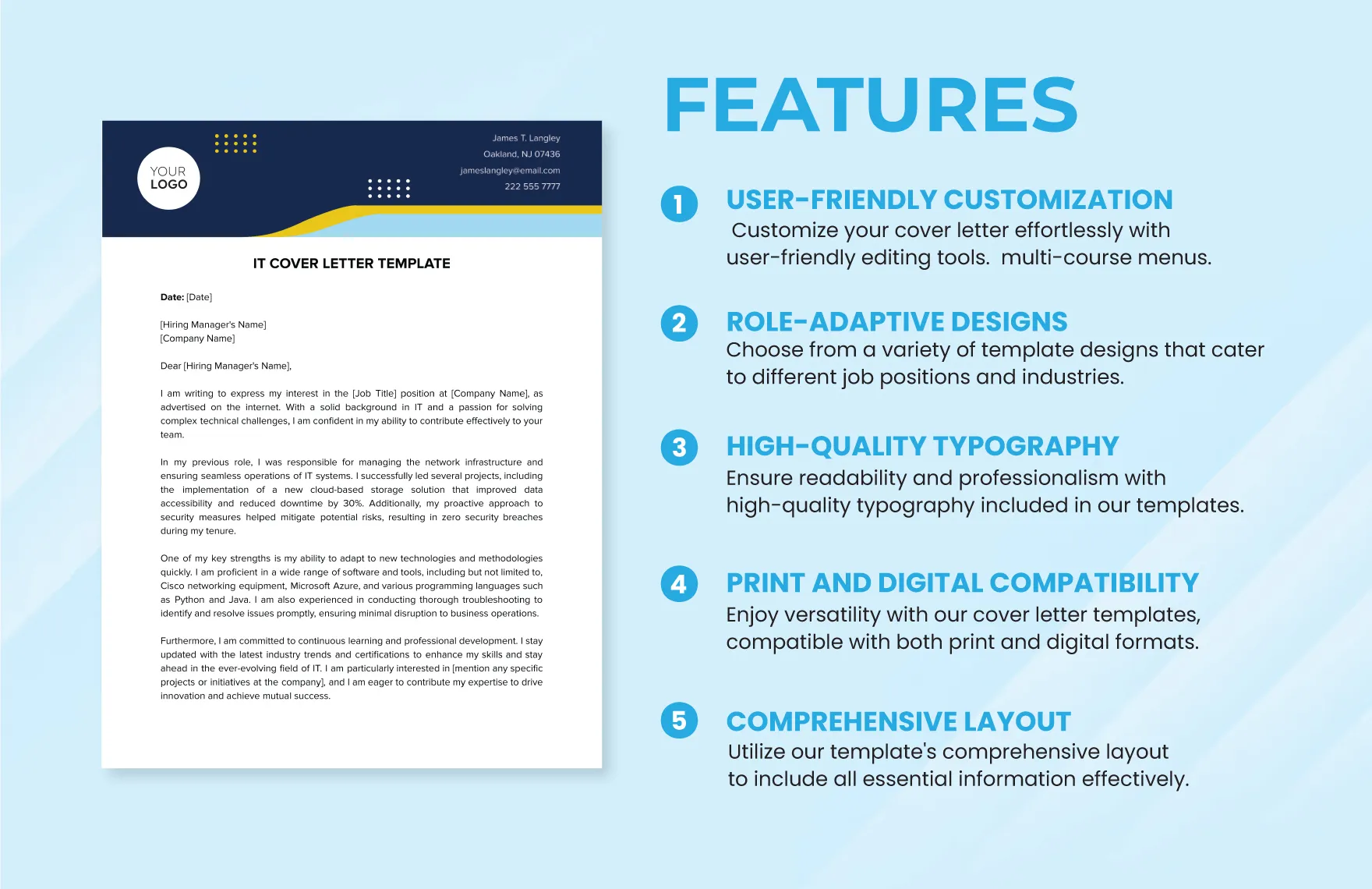Crafting the Perfect IT Cover Letter
In the competitive world of Information Technology, a well-crafted cover letter is your first opportunity to make a lasting impression. It’s more than just a formality; it’s a crucial tool to showcase your personality, skills, and enthusiasm for the role. Unlike a resume, which provides a factual overview of your career, a cover letter allows you to tell a story, explaining why you are the ideal candidate and how your experiences align with the specific requirements of the job. This guide provides job cover letter examples and essential tips to help you create a compelling cover letter that stands out to hiring managers and secures you an interview.
Understanding the Importance of a Cover Letter
Many IT professionals underestimate the power of a cover letter. However, it serves as your first point of contact with a potential employer. It’s a chance to introduce yourself, demonstrate your understanding of the company’s needs, and highlight how your skills and experience make you a perfect fit. A well-written cover letter provides context to your resume, elaborating on key achievements, explaining career transitions, and expressing your genuine interest in the position. It can be the deciding factor, especially in a field where numerous candidates possess similar technical skills. Consider it your personal sales pitch, designed to convince the hiring manager that you deserve an interview. It offers a unique opportunity to show off your personality, communication skills, and passion for technology.
Showcasing Your Skills and Experience
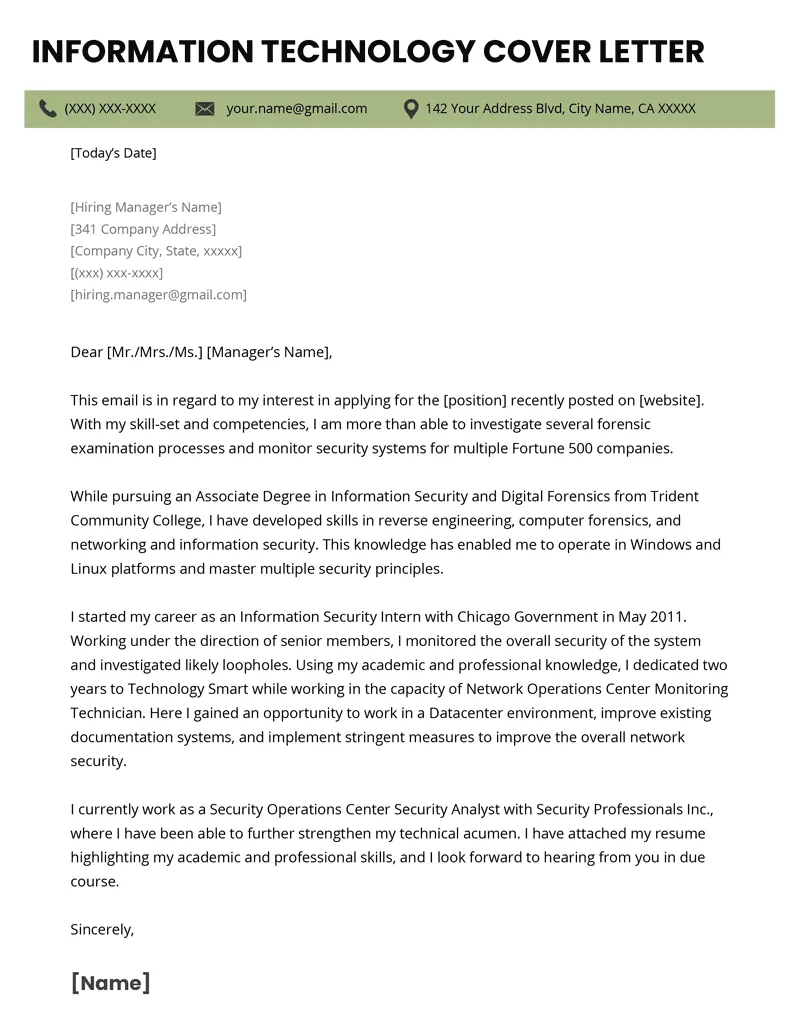
Your cover letter is the ideal space to highlight your most relevant skills and experiences. Don’t simply list your qualifications; demonstrate how you’ve applied them to solve problems, achieve results, and contribute to previous employers’ success. Provide specific examples that quantify your achievements whenever possible. For instance, instead of saying ‘Managed network infrastructure,’ you could say ‘Managed a network infrastructure that supported over 500 users and achieved a 99.9% uptime.’ This level of detail not only provides context but also makes your accomplishments more tangible and impressive. Think about what makes you stand out from other candidates, and use the cover letter to emphasize these unique selling points. Tailor your skills and experiences to match the job description precisely, ensuring that you address the specific requirements listed by the hiring manager.
Highlighting Your Technical Expertise
In IT, technical expertise is paramount. Your cover letter should clearly outline your proficiency in the specific technologies, programming languages, or systems relevant to the job. Mention any certifications, such as Cisco, Microsoft, or AWS certifications, as they can immediately validate your expertise. Explain how you have used your technical skills to solve complex problems or improve processes. For example, if you are applying for a network administrator role, mention your experience with network troubleshooting, security protocols, and network monitoring tools. Be specific and avoid using jargon that the hiring manager may not understand. Make sure you highlight the tools and technologies that are most relevant to the job description. Use this section to showcase your deep understanding of the technical aspects of the role.
Demonstrating Your Soft Skills
While technical skills are essential, soft skills are equally important in the IT field. Demonstrate your ability to communicate effectively, work collaboratively, and solve problems creatively. Provide examples that showcase your teamwork, leadership, and problem-solving abilities. For instance, if you have experience leading a project, describe your role, the challenges you faced, and how you overcame them. Mention any experiences that demonstrate your ability to adapt to new situations, manage time effectively, and communicate technical information to non-technical audiences. These soft skills are critical for succeeding in a team environment and communicating with clients and stakeholders. Highlighting these skills will help you to stand out and demonstrate your ability to thrive in a professional setting.
Structuring Your IT Cover Letter for Success
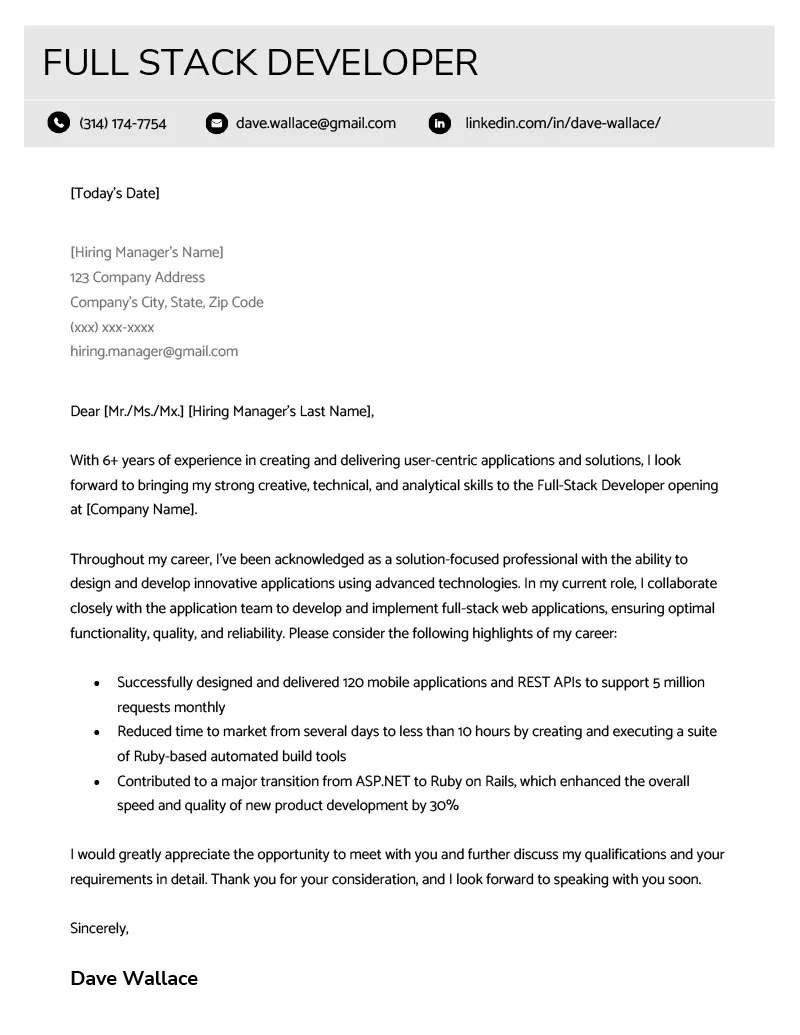
A well-structured cover letter is easy to read and effectively conveys your message. Start with a clear header, followed by a compelling opening, a concise body, and a strong closing. Ensure your letter is formatted professionally with consistent fonts and spacing. Avoid long paragraphs; instead, break up your content into concise sections. Proofread carefully to eliminate any grammatical errors or typos. Using a standard business letter format is recommended. Your cover letter should never exceed one page. It should be tailored to each specific job application.
Header Section
Your header should include your contact information: your name, address, phone number, and email address. It should also include the date and the recipient’s information: the hiring manager’s name (if known), title, company name, and address. This section sets the tone of professionalism and provides the necessary details for the employer to contact you.
Opening Paragraph
Start with a strong opening paragraph that immediately grabs the reader’s attention. State the position you are applying for and where you found the job posting. Briefly explain why you are interested in the role and the company. Show enthusiasm and a clear understanding of the company’s mission or values. Make it clear why you are applying and what makes you a strong candidate, quickly capturing the hiring manager’s interest. For instance, ‘I am writing to express my enthusiastic interest in the Software Engineer position at [Company Name], as advertised on [Platform].’
Body Paragraphs
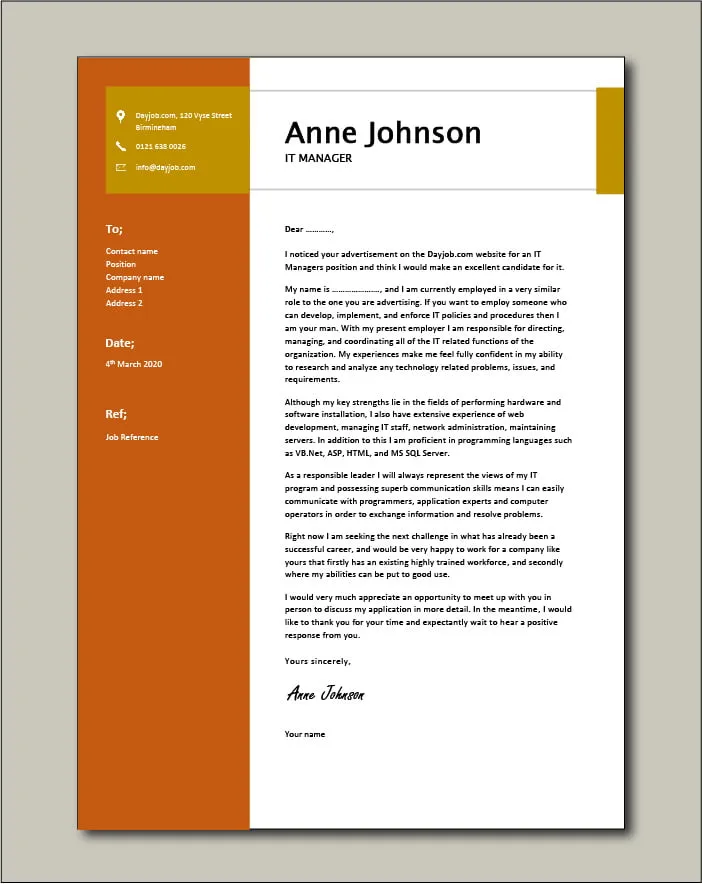
The body of your cover letter should elaborate on your skills, experience, and accomplishments. Focus on the most relevant aspects of your professional background. Explain how your qualifications align with the job requirements. Provide specific examples that demonstrate your abilities. Use bullet points to highlight key achievements, making it easy for the hiring manager to scan and grasp your qualifications quickly. These paragraphs are where you showcase your strengths and convince the employer that you are the best fit for the job. Always align your skills and experience with the needs of the specific role, demonstrating a clear understanding of the job requirements.
Closing Paragraph
In your closing paragraph, reiterate your interest in the position and express your eagerness for an interview. Thank the hiring manager for their time and consideration. Include a call to action, such as inviting them to review your resume or stating that you look forward to hearing from them soon. Make sure your tone is professional and enthusiastic. Your closing paragraph should leave a lasting positive impression and encourage the hiring manager to take the next step.
Tailoring Your Cover Letter to the Job
One of the biggest mistakes job seekers make is sending the same cover letter for every job. Tailoring your cover letter to each specific role is essential. This demonstrates your genuine interest in the company and your understanding of their needs. Review the job description carefully and identify the key requirements, skills, and experiences that the employer is seeking. Then, use your cover letter to address each of these points, providing specific examples of how you meet or exceed their expectations. This level of customization significantly increases your chances of being selected for an interview. Always customize your cover letter to match the specifics of the job posting.
Researching the Company and Role
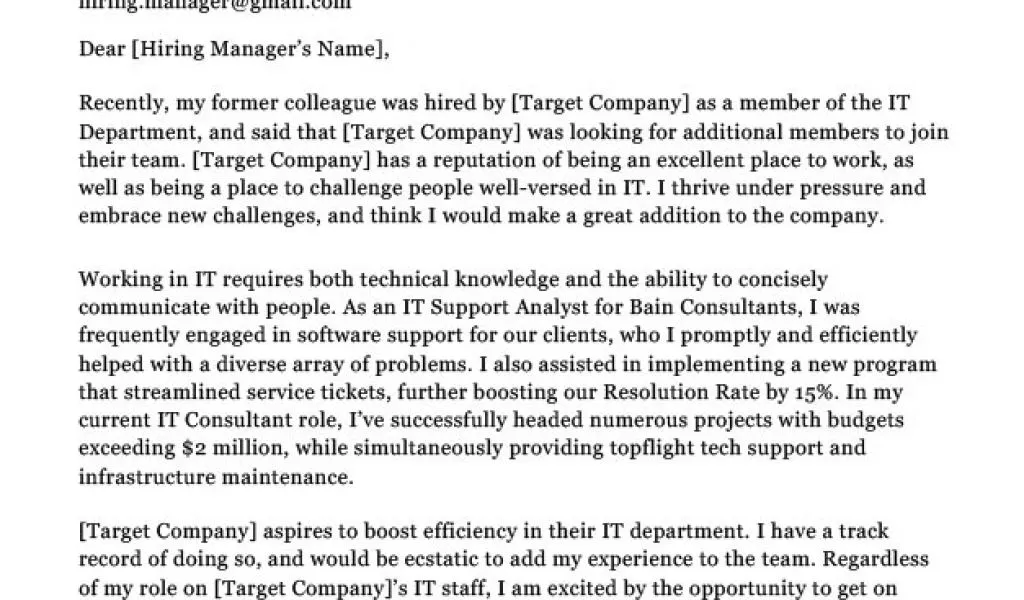
Before writing your cover letter, thoroughly research the company and the specific role. Understand their mission, values, and recent projects. Visit their website, social media profiles, and industry news sources to gather information. Tailor your letter to demonstrate that you understand the company’s goals and challenges. Align your skills and experiences with their needs, showing them how you can contribute to their success. A little research can go a long way in showing your sincere interest and preparedness.
Addressing the Specific Requirements
Carefully analyze the job description and address each of the specific requirements mentioned. Use the same keywords and phrases from the job posting in your cover letter. Provide concrete examples that demonstrate how you have met these requirements in previous roles. If the job description mentions experience with a particular technology or skill, make sure to highlight your proficiency in that area. This targeted approach shows the hiring manager that you are a strong fit for the position and have the skills and experience they are looking for.
Showcasing Relevant Projects and Accomplishments
Provide detailed information about projects and accomplishments that are relevant to the job. Quantify your achievements whenever possible. Instead of simply stating that you improved efficiency, specify by how much. Mention the technologies, tools, and methodologies you used. Show how your contributions have benefited previous employers. Describe projects where you’ve demonstrated leadership, problem-solving skills, or innovation. The more specific and detailed your examples, the better you’ll be able to impress the hiring manager and illustrate the value you can bring to the new role.
Proofreading and Polishing Your Letter
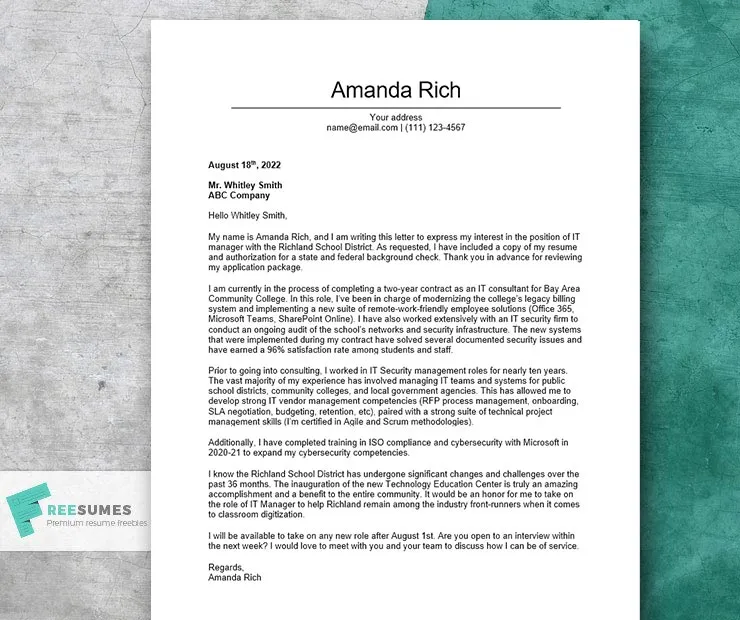
Before submitting your cover letter, it is critical to proofread and polish it meticulously. Errors in grammar, spelling, and punctuation can create a negative impression and detract from your qualifications. Read your cover letter multiple times and ask someone else to review it as well. Ensure the formatting is consistent and professional. Check for any inconsistencies in your contact information or the recipient’s details. A well-polished cover letter demonstrates attention to detail, professionalism, and a commitment to excellence. Always ensure your cover letter is free of errors before submitting.
Common Mistakes to Avoid
Avoiding common mistakes can significantly improve the effectiveness of your cover letter. Overused phrases, typos, and formatting issues can all undermine your application. Taking the time to review your letter and eliminate any potential problems is a must for making a positive impression on potential employers. Make sure your cover letter is professional, tailored, and error-free to make a lasting impression.
Overused Phrases and Clichés
Avoid using overused phrases and clichés that can make your cover letter sound generic and uninspired. Phrases like ‘hardworking,’ ’team player,’ and ‘detail-oriented’ are common but don’t provide specific evidence of your abilities. Instead, use specific examples to demonstrate your skills and experience. Replace generic statements with concrete accomplishments. Instead of saying ‘I am a team player,’ describe a time when you successfully collaborated on a project to achieve a specific outcome. This approach will make your cover letter more engaging and memorable.
Typos and Grammatical Errors
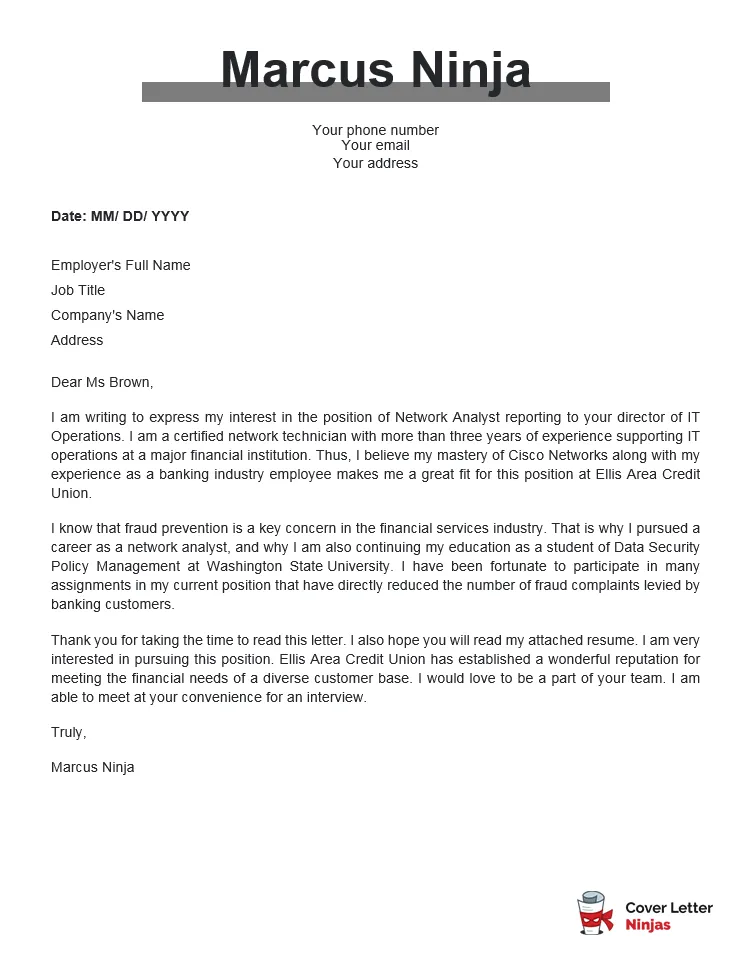
Typos and grammatical errors can undermine your credibility and make you appear unprofessional. Proofread your cover letter carefully and use spell-check and grammar-check tools. Read your letter aloud to catch any awkward phrasing or mistakes. Ask a friend or colleague to review your letter for you. A perfect cover letter requires a keen eye for detail and careful attention to the finer points of language, which shows your professionalism and attention to detail. These errors can easily lead to your application being rejected.
Formatting Issues
Ensure your cover letter is properly formatted with consistent fonts, spacing, and margins. Avoid using complex fonts or layouts that can distract the reader. Use clear headings and bullet points to make your content easy to scan. Make sure your contact information is clearly visible. The layout should be clean and professional. Poor formatting can make your cover letter difficult to read and detract from your message. Always prioritize readability.
Final Thoughts
Crafting an effective IT cover letter requires time, effort, and attention to detail. By understanding the importance of a cover letter, showcasing your skills and experience, and tailoring your letter to the job, you can significantly increase your chances of landing an interview. Remember to proofread and polish your letter carefully, and avoid common mistakes. With a compelling cover letter, you can make a strong first impression and set yourself apart from the competition. Good luck with your job search!
